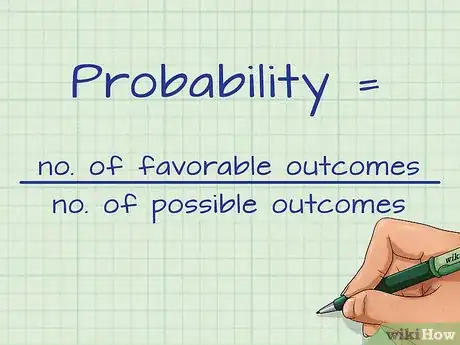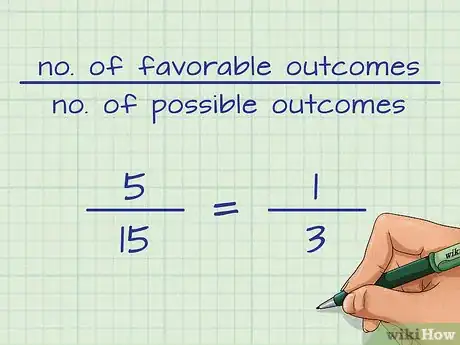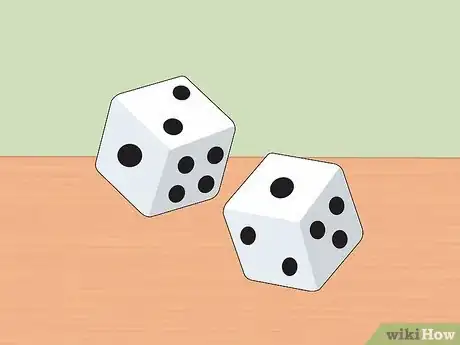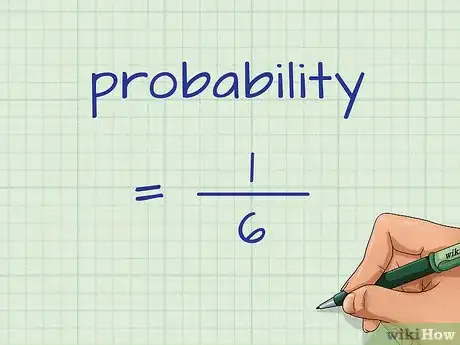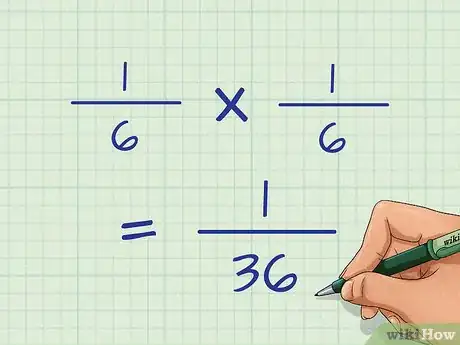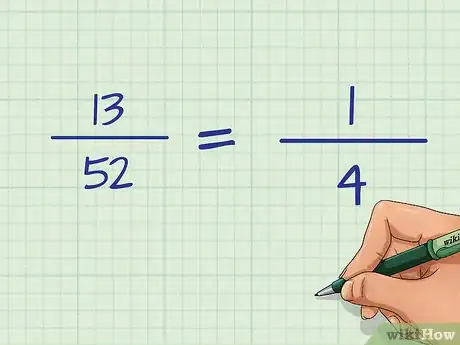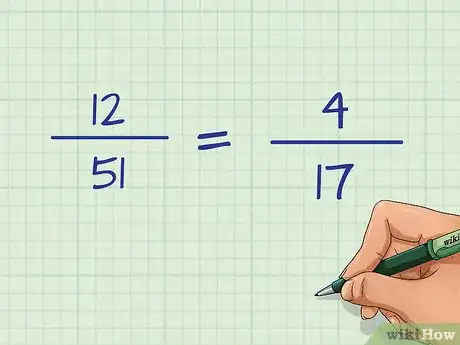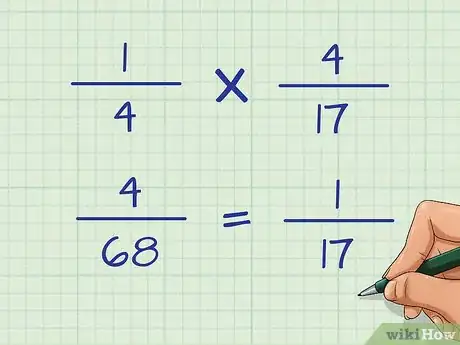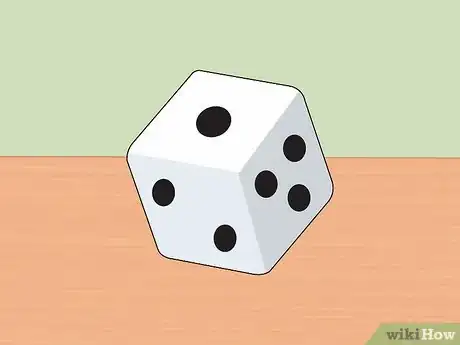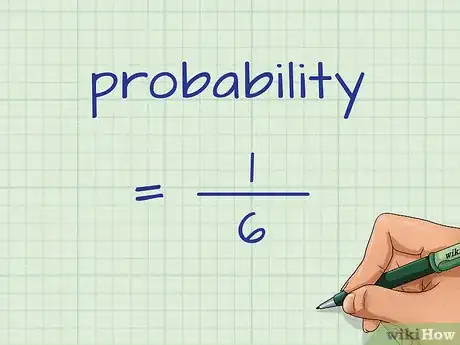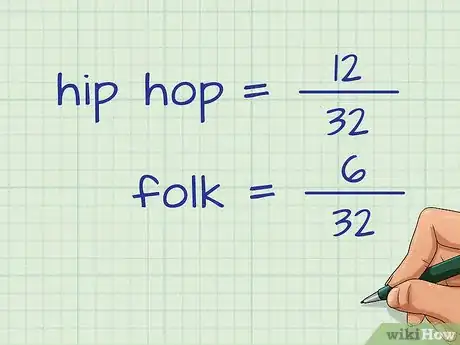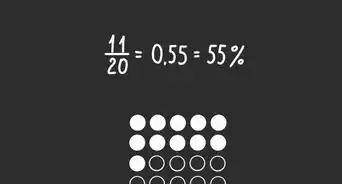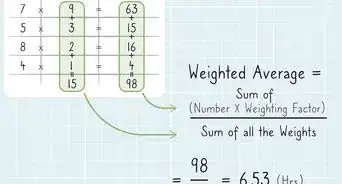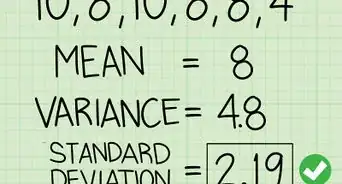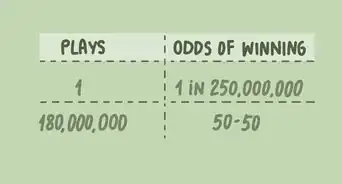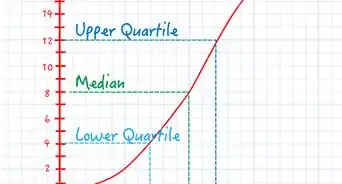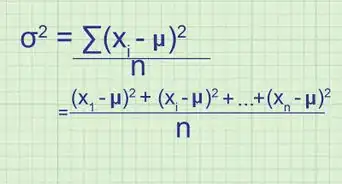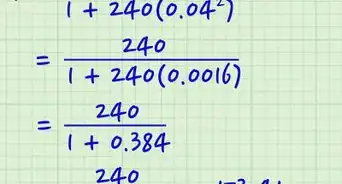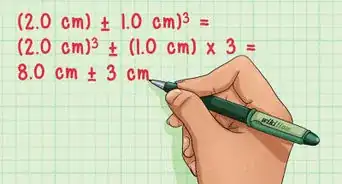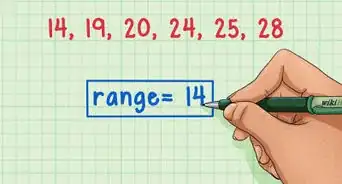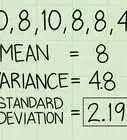This article was co-authored by Mario Banuelos, PhD. Mario Banuelos is an Assistant Professor of Mathematics at California State University, Fresno. With over eight years of teaching experience, Mario specializes in mathematical biology, optimization, statistical models for genome evolution, and data science. Mario holds a BA in Mathematics from California State University, Fresno, and a Ph.D. in Applied Mathematics from the University of California, Merced. Mario has taught at both the high school and collegiate levels.
There are 9 references cited in this article, which can be found at the bottom of the page.
wikiHow marks an article as reader-approved once it receives enough positive feedback. In this case, 90% of readers who voted found the article helpful, earning it our reader-approved status.
This article has been viewed 63,477 times.
Knowing how to calculate the probability of an event or events happening can be a valuable skill when making decisions, whether playing a game or in real life. How you calculate probability changes, however, depending on the type of event you are looking to occur. For example, you would not calculate your chances of winning the lottery the same way you would calculate your chances of drawing a full house in a game of poker. Once you determine whether the events are independent, conditional, or mutually exclusive, calculating their probability is very simple.
Steps
Understanding What Probability Means
-
1
-
2Determine the probability of a single event happening. To do this, complete the probability ratio by determining how many favorable outcomes you can have, and how many possible outcomes you can have.[3]
- Before you can understand more complex probability theory, you must understand how to figure out the probability of a single, random event happening, and understand what that probability means.
- For example, if you have a jar with 10 red marbles and 5 blue marbles, you might want to know what the possibility of randomly pulling out a blue marble is. Since you have 5 blue marbles, the number of favorable outcomes is 5. Since you have 15 marbles total in your jar, the number of possible outcomes is 15. Your probability ratio will look like this:
Simplified, . So, the probability of randomly pulling out a blue marble is 1 out of 3.
Understanding the Probability of Multiple Independent Events
-
1Determine whether the two events are independent. Independent events are ones in which the outcome of one event does not affect the probability of the other event happening.[4]
- For example, if you are using two dice, you might want to know what the probability is that you will roll a double 3. The chance that you will throw a 3 with one die does not affect the chance that you will throw a 3 with the second die, thus the events are independent.
-
2Determine the probability of the first event. To do this, set up the ratio , where a favorable outcome is the event you are seeking to happen.[5]
- For example, if the first event is throwing a 3 with one die, the number of favorable outcomes is 1, since there is only one 3 on a die. The number of possible outcomes is 6, since a die has six sides. So, your ratio will look like this: .
-
3Determine the probability of the second event. To do this, set up the ratio, just like you did for the first event.[6]
- For example, if the second event is also throwing a 3 with one die, the probability is the same as the first event: .
- The probability of the first and second event might not be the same. For example, if you and a classmate own the same outfit, you might want to know the probability that she and you will wear the same outfit to school on the same day. If you have five outfits, the odds of you wearing the outfit is , but if your classmate has ten outfits, the odds of her wearing the outfit is .
-
4Multiply the probabilities of the individual events. This will give you the probability of both events happening.[7]
- For a refresher on how to multiply fractions, read Multiply Fractions.
- For example, if the probability of throwing a 3 with one die is , and the probability of throwing a 3 with a second die is also , to find the probability of both events happening, you would calculate . So, the probability of throwing double threes is 1 out of 36.
Understanding the Probability of Conditional Events
-
1Determine whether the two events are conditional. A conditional event, also called a dependent event, is an event that may be affected by the event(s) that come before.[8]
- For example, if you are drawing from a standard deck of cards, you might want to know what the probability is of drawing a heart on the first and second draws. Drawing a heart the first time affects the probability of it happening again, because once you draw one heart, there are fewer hearts in the deck, and fewer cards in the deck.
-
2Determine the probability of the first event happening. To do this, set up the ratio , where a favorable outcome is the event you are seeking to happen.
- For example, if the first event is drawing a heart from a deck of cards, the number of favorable outcomes is 13, since there are 13 hearts in a deck. The number of possible outcomes is 52, since a deck has 52 cards total. So, your ratio will look like this: . Simplified, the probability is .
-
3Determine the probability of the second event happening, given that the first event already happened.[9] To do this, you will need to examine how the first event happening will affect the number of favorable and possible outcomes of the second event.
- For example, if you pulled a heart on your first draw, now there are only 12 hearts in the deck, and there are only 51 cards total. So, the probability of drawing a heart on your second draw is . Simplified, the probability is .
-
4Multiply the probabilities of the individual events. This will give you the probability of both events happening.[10]
- For a refresher on how to multiply fractions, read Multiply Fractions.
- For example, if the probability of pulling a heart on your first draw is , and the probability of pulling a heart on your second draw, given that you pulled a heart on your first draw, is , to find the probability of both events happening, you would calculate:
So, the probability of pulling hearts on your first and second draw is 1 out of 17.
Understanding the Probability of Mutually Exclusive Events
-
1Determine whether the two events are mutually exclusive. Mutually exclusive events are events that cannot happen at the same time.[11]
- Mutually exclusive events will be marked by the conjunction or. (Events that are not mutually exclusive will use the conjunction and.)[12]
- For example, if you are rolling one die, you might want to know the probability of rolling a 3 or a 4. You cannot roll a 3 and a 4 with one die, so the events are mutually exclusive.
-
2Determine the probability of the first event. To do this, set up the ratio , where a favorable outcome is the event you are seeking to happen.
- For example, if the first event is throwing a 3 with one die, the number of favorable outcomes is 1, since there is only one 3 on a die. The number of possible outcomes is 6, since a die has six sides. So, your ratio will look like this: .
-
3Determine the probability of the second event. To do this, set up the ratio, just like you did for the first event.[13]
- For example, if the second event is throwing a 4 with one die, the probability is the same as the first event: .
- The probability of the first and second event might not be the same. For example, you might want to know the probability of the next random song in a 32-song playlist being hip hop or folk. If there are 12 hip hop songs in the playlist, and 6 folk songs, the probability of the next song being hip hop is , and the probability of it being folks is .
-
4Add the probabilities of the individual events. This will give you the probability of either event happening.[14]
- For a refresher on how to add fractions, read Add Fractions.
- For example, if the probability of throwing a 3 with one die is , and the probability of throwing a 4 with one die is also , to find the probability of both events happening, you would calculate:
So, the probability of throwing a 3 or a 4 is 1 out of 3.
Expert Q&A
Did you know you can get expert answers for this article?
Unlock expert answers by supporting wikiHow
-
QuestionWhat is the formula for probability?
 Mario Banuelos, PhDMario Banuelos is an Assistant Professor of Mathematics at California State University, Fresno. With over eight years of teaching experience, Mario specializes in mathematical biology, optimization, statistical models for genome evolution, and data science. Mario holds a BA in Mathematics from California State University, Fresno, and a Ph.D. in Applied Mathematics from the University of California, Merced. Mario has taught at both the high school and collegiate levels.
Mario Banuelos, PhDMario Banuelos is an Assistant Professor of Mathematics at California State University, Fresno. With over eight years of teaching experience, Mario specializes in mathematical biology, optimization, statistical models for genome evolution, and data science. Mario holds a BA in Mathematics from California State University, Fresno, and a Ph.D. in Applied Mathematics from the University of California, Merced. Mario has taught at both the high school and collegiate levels.
Assistant Professor of Mathematics
-
QuestionHow do you know when to multiply the fractions and when to add them?
 Community AnswerMultiplication of probabilities is for when the event requires multiple things to happen. (For example, roll a 1 on the first die AND, having done that, roll a 4 on the second die.) The combo event has a probability of (1/6)*(1/6). Addition of probabilities is for when an event can be achieved in multiple ways that can't both happen. (For example, roll EITHER a 1 OR a 4 on a die.) The combo event has a probability of (1/6) + (1/6).
Community AnswerMultiplication of probabilities is for when the event requires multiple things to happen. (For example, roll a 1 on the first die AND, having done that, roll a 4 on the second die.) The combo event has a probability of (1/6)*(1/6). Addition of probabilities is for when an event can be achieved in multiple ways that can't both happen. (For example, roll EITHER a 1 OR a 4 on a die.) The combo event has a probability of (1/6) + (1/6). -
QuestionIf I tossed two fair dice. What is the probability of getting 7?
 DonaganTop AnswererThe probability is 1 in 6 (1:6 or 1/6). There are 36 possible combinations of the dice, and six of them result in a 7. For each of the six numbers that can show on die A, there is one number on die B that will result in a total of 7, so 6 of the 36 possible combinations will total 7, and 6 of 36 is 1 of 6.
DonaganTop AnswererThe probability is 1 in 6 (1:6 or 1/6). There are 36 possible combinations of the dice, and six of them result in a 7. For each of the six numbers that can show on die A, there is one number on die B that will result in a total of 7, so 6 of the 36 possible combinations will total 7, and 6 of 36 is 1 of 6.
References
- ↑ https://www.mathsisfun.com/data/probability.html
- ↑ http://onlinestatbook.com/2/probability/basic.html
- ↑ Mario Banuelos, PhD. Assistant Professor of Mathematics. Expert Interview. 11 December 2020.
- ↑ http://onlinestatbook.com/2/probability/basic.html
- ↑ https://flexbooks.ck12.org/cbook/ck-12-precalculus-concepts-2.0/section/12.7/related/lesson/calculating-probabilities-of-combined-events-alg-ii/
- ↑ https://flexbooks.ck12.org/cbook/ck-12-precalculus-concepts-2.0/section/12.7/related/lesson/calculating-probabilities-of-combined-events-alg-ii/
- ↑ https://www.mathsisfun.com/data/probability-events-independent.html
- ↑ https://www.mathsisfun.com/data/probability-events-conditional.html
- ↑ http://onlinestatbook.com/2/probability/basic.html
- ↑ http://onlinestatbook.com/2/probability/basic.html
- ↑ https://www.mathsisfun.com/data/probability-events-mutually-exclusive.html
- ↑ https://www.mathsisfun.com/data/probability-events-mutually-exclusive.html
- ↑ https://openstax.org/books/statistics/pages/3-2-independent-and-mutually-exclusive-events
- ↑ https://libraryguides.centennialcollege.ca/c.php?g=717168&p=5127684
About This Article
To understand probability, learn that it refers to the likelihood of an unpredictable event occurring. If you want to calculate the probability of a single event, you'll want to divide the number of favorable outcomes by the number of potential outcomes. For example, if you have 5 blue marbles and 10 red marbles in a box and want to know the probability of you pulling out a blue marble, divide 5 by 15. Since you can simplify 5 divided by 15 to 1 divided by 3, you know that there is a 1 in 3 chance of you pulling out a blue marble. To find out how to calculate the probability of multiple events taking place, keep reading!
